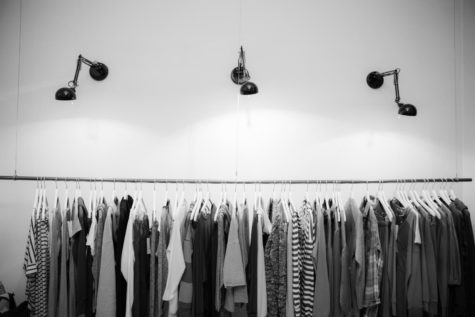Following fashion trends is an expensive hobby. Clothing can be rather expensive, in low stock, or go out of style quickly. It’s something that’s out of reach for many.
What if there was a solution for you to “fit in?” A way for you to wear the newest clothes at cheap prices? In comes companies like Zara, H&M and Shein offering high-end clothing at low costs. But there’s a catch.
There’s a reason these companies offer the latest clothing at such a low cost. The answer is through many factors, including cheaper materials, stealing designs from other designers and, worst of all, worker exploitation.
The current trend of big companies taking designs and making them cheaper is a hot topic within the fashion industry called fast fashion.
Take, for example, Shein, who is the most notorious fast fashion business becoming one of the most popular shopping sites in the world and growing exponentially throughout the recent years.
Recently they have come under fire for constantly stealing original works from independent designers and selling them in their stores for significantly less.
Shein is not the only perpetrator of this, as many companies are guilty of copying. Due to very loose copyright laws when it comes to clothing designs, companies get away with it very often.
A lot of this ultimately goes over the consumers’ heads. To them, they’re getting a well-designed piece of clothing at an affordable price. But corners have to be cut in order for the cost to be so low.
It should come at no surprise that making a cheaper product results in cheaper materials. The product lasts a significantly shorter time, causing the consumer to continue to buy more. The cycle is endless.
That is the practice that these companies use—planned obsolescence. It ensures that the clothes last just long enough until the next trend comes along, forcing consumers to continue buying new products.

Social media plays a big influence on fashion culture, with influencers being propped up by these companies to show off their products and decide what is or isn’t trendy.
This overconsumption of clothing is a big factor in climate change. Materials like nylon, polyester and other synthetic fibers are non-renewable and cause an increase in carbon emissions. WHY do they increase carbon emissions? Please explain.
Companies have promised to reduce or eliminate carbon emissions in their production. However their plans to do so stretch far into the future. With such a limited time projected to save our climate, their actions feel less substantial.
One of the biggest issues with fast fashion is the exploitation of labor. Companies outsource these jobs to citizens in countries like Bangladesh, Vietnam, China and Turkey, where workers endure long, harsh working conditions for extremely low wages.
Worker exploitation is such a massive issue because nearly all clothing is made in these sweatshops. The clothes that you currently have on your back were made in a sweatshop.
Taking all of this into account, this current trend of fashion is exploitative, manipulative and harmful for the environment. So the question is what can we do about it?
The answer isn’t so clear. There isn’t a truly ethical way to consume fashion, or anything in that matter, as all of it is made through exploitation and not all alternatives are inclusive.
Sure supporting independent designers and brands instead of large conglomerates is a more ethical approach, but the cost reflects that. It can be out of reach for many people.
The appeal of these clothing brands is their accessibility. A lot of people aren’t able to buy clothes more than a few times a year, so these shopping hauls are often out of necessity.
But a lot of consumers are just simply unaware of the process, with no knowledge of the production or its harmful effects. To them, it’s just cheap clothing.
The epidemic of fast fashion cannot be blamed on people, but rather the exploitative companies producing these products. Despite this, there needs to be a general awareness of this issue for there to be change. While many are aware of this issue, it’s nowhere near enough for there to be push back.
There are no truly ethical alternatives, but there are less unethical ones. Buy less, shop used, boycott companies and make the most of your wardrobe. Do whatever you can to contribute less to the problem.



